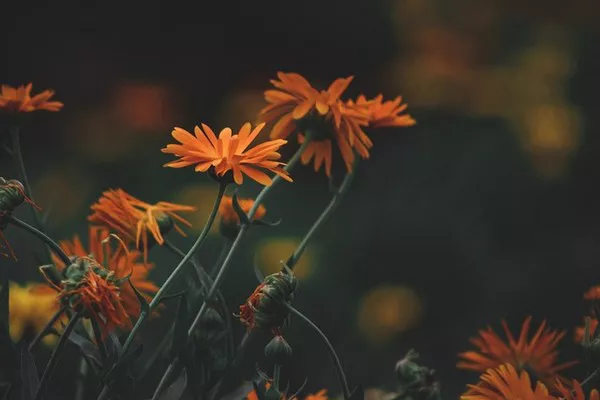Squirrels, those industrious and adorable creatures, can sometimes become a nuisance in our gardens. Their penchant for digging up bulbs, munching on plants, and raiding bird feeders can leave gardeners frustrated and looking for solutions. While there are various methods to deter squirrels, one natural and aesthetically pleasing approach is to utilize specific flowers known for their ability to repel these furry intruders. In this article, we explore the world of squirrel-deterring flowers, their characteristics, and how they can be incorporated into your garden design.
Understanding the Squirrel Dilemma
Before delving into the floral solutions, it’s crucial to understand why squirrels might be drawn to your garden in the first place. Squirrels are attracted to food sources like nuts, seeds, and bulbs, making gardens a veritable buffet for them. Additionally, they may seek out shelter in trees and shrubs, which further increases their presence in residential areas. While squirrels play an essential role in ecosystems, their activities can sometimes disrupt the harmony of our gardens.
The Power of Flowers: Natural Squirrel Deterrents
Fortunately, nature provides us with various tools to manage squirrel activity, and flowers are among the most effective and visually pleasing options. Certain flowers possess characteristics that squirrels find unappealing, whether due to their scent, taste, or texture. By strategically planting these flowers, you can create a barrier that deters squirrels while enhancing the beauty of your garden.
Marigolds: A Colorful Defense
Marigolds, known for their vibrant blooms and resilience, are also excellent squirrel deterrents. These hardy annuals emit a scent that squirrels find unpleasant, making them less likely to venture into areas where marigolds are present. Additionally, their bright colors can confuse squirrels, making them think twice before exploring further.
Daffodils: Toxic Beauty
Daffodils, with their trumpet-shaped blooms and cheerful demeanor, are another effective deterrent against squirrels. These spring-blooming bulbs contain toxic alkaloids that are harmful to squirrels if ingested. As a result, squirrels tend to avoid areas where daffodils are planted, reducing the likelihood of garden damage.
Alliums: A Pungent Shield
Alliums, members of the onion family, not only add architectural interest to gardens but also serve as a natural squirrel repellent. Their strong odor, reminiscent of onions or garlic, creates a barrier that deters squirrels from entering your garden beds. Planting alliums strategically around vulnerable areas can help protect your plants from squirrel intrusion.
Lavender: A Soothing Repellent
Lavender, prized for its fragrant blooms and soothing aroma, also happens to be a natural squirrel repellent. Squirrels are known to dislike the scent of lavender, making it an excellent choice for gardens prone to squirrel activity. Additionally, lavender attracts pollinators, further enhancing the biodiversity of your garden ecosystem.
Foxgloves: Toxic Beauty
Foxgloves, with their towering spikes of bell-shaped flowers, possess toxic compounds that deter squirrels and other pests. While beautiful to look at, foxgloves contain digitalis glycosides, which are harmful if ingested. As a result, squirrels tend to avoid areas where foxgloves are present, providing an added layer of protection for your garden.
Rosemary: A Culinary Defense
Rosemary, a versatile herb beloved for its culinary uses, also serves as a natural squirrel deterrent. Squirrels are repelled by the strong scent of rosemary, making it an excellent choice for planting near vulnerable areas. Additionally, rosemary’s aromatic foliage adds texture and interest to garden beds, further enhancing its appeal.
Implementing Squirrel-Repellent Flowers in Your Garden
Incorporating squirrel-repellent flowers into your garden design requires careful planning and consideration. Here are some tips for effectively utilizing these flowers to deter squirrels:
Strategic Placement: Identify areas of your garden that are most vulnerable to squirrel activity, such as flower beds, vegetable patches, or areas around bird feeders. Plant squirrel-repellent flowers strategically in these areas to create a barrier that discourages squirrels from entering.
Mix and Match: Experiment with different varieties of squirrel-repellent flowers to maximize their effectiveness and enhance the visual appeal of your garden. Mixing flowers with varying heights, colors, and textures can create a dynamic and diverse landscape while deterring squirrels.
Companion Planting: Consider companion planting techniques to enhance the effectiveness of squirrel-repellent flowers. Pairing these flowers with compatible plants that offer additional benefits, such as attracting pollinators or repelling other pests, can create a synergistic garden environment.
Maintenance: Regularmaintenance, such as deadheading spent blooms and removing debris, helps keep your garden tidy and reduces potential hiding spots for squirrels. Inspect your plants regularly for signs of squirrel damage and take appropriate action to protect vulnerable areas.
Supplementary Measures: While squirrel-repellent flowers can be effective on their own, consider incorporating additional deterrents, such as physical barriers or natural repellents like predator urine or homemade sprays, for added protection.
Conclusion
Incorporating squirrel-repellent flowers into your garden design offers a natural and aesthetically pleasing solution to the challenge of squirrel activity. By strategically planting flowers with characteristics that deter squirrels, you can create a beautiful and harmonious garden environment while protecting your plants from damage. Whether you opt for the vibrant blooms of marigolds, the toxic beauty of daffodils, or the pungent scent of alliums, there are numerous options available to suit your garden style and preferences. With careful planning and maintenance, you can enjoy a squirrel-free garden filled with the delightful sights and scents of nature’s bounty.


